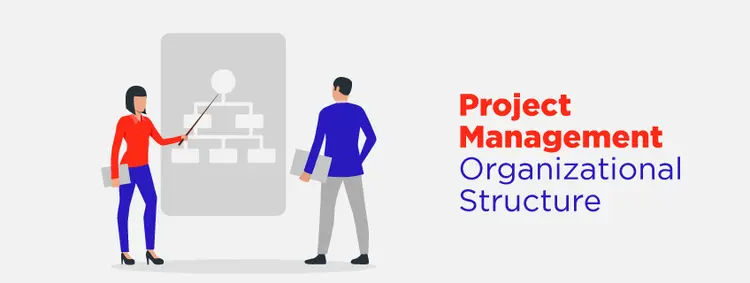In the evolving landscape of professional development, the year 2025 marks a pivotal moment as we delve into the significance and purpose of outcome-based upskilling.
Traditional training models are undergoing a transformation, emphasizing the need for a more dynamic and responsive approach that focuses on measurable results and real-world applications. This discussion aims to unravel the importance of outcome-based upskilling, its principles, and key components, shedding light on why it is a crucial topic in the current learning discourse.
Outcome-Based Learning (OBL)
Outcome-based learning is a learning approach centered around defining clear learning objectives, assessing learner performance based on these objectives, and ultimately measuring the outcomes achieved. This method prioritizes the demonstration of competencies and skills, shifting away from rote memorization, toward practical application and understanding.
A. Principles of Outcome-Based Learning
- Clarity of Objectives: Clearly defined learning outcomes set the foundation for a structured learning experience.
- Assessment Alignment: Assessments are directly tied to the specified learning objectives, ensuring that they accurately reflect the intended outcomes.
- Continuous Improvement: Outcome-based learning promotes an iterative process, encouraging continuous improvement through feedback and reflection.
B. Key Components of Outcome-Based Learning
- Learning Outcomes: Clearly articulated statements describing what learners are expected to know or be able to do by the end of the learning experience.
- Assessment Strategies: Various methods and tools are employed to evaluate learners’ mastery of the defined learning outcomes.
- Feedback Mechanisms: Timely and constructive feedback plays a crucial role in helping learners understand their strengths and areas for improvement.
- Adaptability: The flexibility to adjust teaching methods and content delivery based on ongoing assessment results ensures a responsive learning environment.
Why is Outcome-Based Learning Important?
Outcome-based learning is important for several reasons, some of them being:
- Real-world Relevance: OBL aligns professional development with the demands of the real world by ensuring that learners acquire practical skills and knowledge applicable in their future professions. This approach bridges the gap between theoretical learning and real-world application for enterprise and business people seeking to upskill their roles.
- Customized Learning Paths: Unlike traditional models, OBL allows for personalized learning experiences. Learners can progress at their own pace, focusing on areas where they need improvement, fostering a deeper understanding of the subject matter.
- Measurable Success: The emphasis on clearly defined outcomes facilitates better measurement of learner success. Educators, learners, and stakeholders can easily gauge the effectiveness of the learning process and identify areas for improvement.
- Preparation for the Future: In a rapidly evolving world, adaptability and problem-solving skills and Soft Skills training are paramount. OBL equips learners with the ability to apply knowledge creatively, preparing them to navigate challenges and contribute meaningfully to society.
- Enhanced Engagement: OBL promotes active learner engagement through hands-on learning experiences. By focusing on outcomes, educators can design learning activities that captivate learners’ interest, making the learning process more enjoyable and impactful.
- Continuous Improvement: The cyclical nature of OBL, involving regular assessment and feedback, supports continuous improvement for both professionals and practitioners. This iterative process ensures that the skill development system evolves to meet the changing needs of individuals and industries.
As we step into 2024, it is crucial to engage in conversations surrounding Outcome-Based Learning, recognizing its potential to enhance professional development and better equip individuals within the workforce for the challenges and opportunities of the future with a quick ROI. This paradigm shift reflects a commitment to quality learning that goes beyond traditional measures and places the focus squarely on tangible, real-world outcomes.
etutor.co
How is OBL Different from the Traditional/Conventional Way?
Outcome-Based Learning (OBL) contrasts traditional or conventional learning models, revolutionizing the nature of upskilling. This shift is evident in various aspects, each of which addresses challenges posed by traditional learning methods.
1. Outcome-Based Learning vs Traditional: Challenges
A. Rote Memorization vs. Practical Application:
- Traditional Approach: Emphasizes rote memorization and theoretical knowledge.
- Outcome-Based Learning: Prioritizes practical application and the ability to demonstrate acquired skills.
B. Standardized Testing vs. Individualized Assessment:
- Traditional Approach: Often relies on standardized testing that may not accurately capture individual learning variations.
- Outcome-Based Learning: Favors individualized assessment aligned with specific learning objectives, offering a more nuanced understanding of learner capabilities.
C. Passive Learning vs. Active Engagement:
-
Traditional Approach: Tends to foster passive learning through lectures and information delivery.
-
Outcome-Based Learning: Promotes active engagement, collaborative problem-solving, and hands-on experiences.
2. Training Models in OBL
A. Competency-Based Learning:
- OBL Strategy: Focuses on developing specific competencies and skills.
- Stats: According to a study by the National Center on Education and the Economy, competency-based learning has shown a 10-20% improvement in learner outcomes (Source: NCEE).
B. Project-Based Learning:
- OBL Strategy: Emphasizes learning through projects and real-world applications.
- Stats: Project-based learning has demonstrated a 21% improvement in learner performance according to the Buck Institute for Education (Source: BIE).
3. Shrinking Budgets in L&D
A. Resource Challenges in Traditional L&D: The traditional L&D model in enterprises, relying on expensive physical resources and infrastructure, faces challenges with shrinking budgets due to economic uncertainties and the need for immediate ROI across all departments. Allocating enough funds for traditional materials becomes difficult, impacting employee development. To address this, there’s a need to explore cost-effective digital solutions and alternative models that prioritize essential skills for employees in a more budget-friendly way.
B. OBL Approach: The OBL approach is a smart solution for businesses dealing with tight L&D budgets. By focusing on specific skills and using technology wisely, it helps enterprises make the most of their resources. This way, businesses can get a better return on investment in their Employee Development programs, especially when budgets are limited.
C. Cost-Effectiveness: Stats: A report by Deloitte found that organizations adopting outcome-based approaches in learning and development experienced a 26% increase in cost-effectiveness (Source: Deloitte).
4. Lack of ROI in Traditional Learning
A. Measuring Learning Impact:
- Traditional Model: Often struggles to provide tangible measures of learning impact.
- OBL Strategy: Places a strong emphasis on measurable outcomes, providing clear indicators of Return on Investment (ROI).
B. Employability and Workforce Readiness:
|
Aspects of Comparison |
Outcome-Based Learning (OBL) |
Traditional/Conventional Approach |
|
Challenges |
Emphasizes addressing real-world challenges. |
May struggle to bridge the gap between theoretical knowledge and practical application. |
|
Training Models |
Focused on competency-based models. |
Often relies on lecture-based, one-size-fits-all approaches. |
|
Shrinking Budget in L&D |
Flexible, technology-driven solutions. |
Traditional methods may incur higher costs for materials and infrastructure. |
|
Lack of ROI |
Clear measurement of outcomes and impact. |
Difficulty in quantifying the return on investment due to limited outcome assessment. |
In the face of these challenges, 2025 emerges as the year to delve into outcome-based learning, offering a transformative approach that addresses the limitations of traditional learning models and aligns with the demands of the modern workforce.
Benefits of Outcome-Based Learning
Outcome-Based Learning (OBL) is gaining prominence as an educational approach that focuses on measurable results and real-world application of knowledge. In 2025, the shift towards OBL is more prominent than ever, driven by its numerous benefits.
- Customization and Flexibility: One of the primary advantages of OBL is its ability to accommodate diverse learning styles and paces. Learners can progress at their own speed, ensuring a more personalized educational experience.
- Real-world Application: OBL emphasizes the practical application of knowledge. By focusing on desired outcomes, learners gain skills that are directly applicable in their chosen fields, enhancing their readiness for the workforce.
- Enhanced Motivation: With clearly defined goals and outcomes, learners are more motivated to engage in the learning process. Knowing the purpose behind each lesson fosters a sense of accomplishment, driving sustained interest.
- Measurable Progress: OBL enables educators to assess and measure learning outcomes effectively. This data-driven approach provides valuable insights into the effectiveness of teaching methods and helps in continuous improvement.
The Four Stages for Outcome-Based Learning
Implementing Outcome-Based Learning involves a systematic approach, typically encompassing four key stages:
- Identification of Learning Outcomes: Define the specific skills, knowledge, and competencies that learners should acquire by the end of the course or program. These outcomes serve as the foundation for designing the curriculum.
- Designing Assessments: Develop assessments that align with the identified learning outcomes. These assessments can include projects, presentations, or exams that measure the learners’ ability to apply their knowledge in real-world scenarios.
- Curriculum Development: Construct a curriculum that is centered around achieving the identified outcomes. This may involve restructuring existing courses, incorporating experiential learning opportunities, and integrating tools and technology to enhance the learning experience.
- Feedback and Continuous Improvement: Regularly collect feedback from learners, instructors, and other stakeholders to evaluate the effectiveness of the OBL approach. Use this feedback to make necessary adjustments and improvements, ensuring the ongoing relevance and success of the learning outcomes.
Implementing Outcome-Based Learning Strategies
Successfully implementing Outcome-Based Learning requires a strategic and well-executed plan:
- Faculty Training and Development: Provide faculty members with training on OBL methodologies and strategies. Equip them with the skills needed to identify, design, and assess learning outcomes effectively.
- Technological Integration: Leverage technology to support OBL initiatives. Implement learning management systems, data analytics tools, and other technologies to streamline the assessment and feedback processes.
- Stakeholder Engagement: Engage with learners, employers, and other relevant stakeholders to ensure alignment between learning outcomes and real-world expectations. This collaboration enhances the relevance of learning in meeting industry needs.
- Monitoring and Evaluation: Establish a robust system for monitoring and evaluating the effectiveness of OBL strategies. Regularly assess the achievement of learning outcomes and adjust instructional methods as needed to optimize results.
Tools and Technologies for OBL Outcome Measurement
Tools for OBL Outcome Measurement
- Learning Management Systems (LMS): Modern LMS platforms offer comprehensive tracking and reporting features, allowing educators to monitor learners’ progress and assess whether learning outcomes are being met. KnowledgeHut’s Learning Experience Platform, PRISM, boasts a unified platform for gamified learning experience. PRISM provides a unified platform for engaging learning experiences, real-time progress tracking, and insightful reporting. Unlike traditional systems, PRISM integrates cloud labs and gamified activities to keep learners motivated and actively involved. This dynamic approach ensures effective learning assessment and aligns skill development with organizational objectives, making PRISM the ultimate solution for interactive learning.
- Data Analytics and AI: Utilizing data analytics and artificial intelligence enables the analysis of large datasets to identify patterns and trends in learner performance. This can help educators tailor interventions for better learning outcomes. Embrace the future of education, learn the basics of Artificial Intelligence, and revolutionize the way we nurture knowledge.
- Assessment Tools: Specialized assessment tools, including formative and summative assessments, are designed to measure specific learning outcomes. These tools provide instant feedback to both learners and educators.
Technologies Facilitating OBL
- Virtual Reality (VR) and Augmented Reality (AR): Immersive technologies like VR and AR create realistic learning environments, allowing learners to apply theoretical knowledge in practical scenarios, enhancing the measurement of outcomes.
- Simulations and Gamification: Simulations and gamified learning experiences engage learners actively and provide a platform to assess their problem-solving abilities and critical thinking skills.
- Blockchain for Credentialing: Blockchain technology ensures secure and transparent credentialing, allowing employers to verify the authenticity of an individual’s educational achievements and outcomes. If you’re keen on mastering this cutting-edge technology, consider enrolling in the best Blockchain courses available.
Why Is Outcome Based on Learning the Future and Its Trends?
A. Evolving Technologies and Their Impact
As we enter 2024, technology continues to reshape upskilling. Tools like PRISM are designed for effective learning. It offers a user-friendly interface and works seamlessly across different platforms, making it accessible for all. PRISM provides interactive learning experiences, moving beyond traditional lectures to engage learners in practical activities. Its focus on practical skills ensures relevance in today’s professional landscape. Whether you’re seeking career growth or simply expanding your knowledge, PRISM offers a convenient and practical way to achieve your learning goals.
B. Learning Strategies for Outcome-Based Learning
Outcome-Based Learning in enterprises emphasizes mastering specific skills and competencies, shifting away from traditional information quantity focus. Tailored learning strategies foster critical thinking, problem-solving, and the practical application of knowledge. Project-based learning, collaborative activities, and real-world case studies are integral components of Outcome-Based Learning strategies within the corporate context. These approaches enhance comprehension and instill a deeper understanding of concepts, preparing employees for the challenges of the modern workforce.
C. Role of AI in Learning Outcome
Artificial Intelligence emerges as a transformative force in Outcome-Based Corporate Learning, revolutionizing the educational landscape within enterprises. AI algorithms analyze individual learning patterns, adapting content delivery to suit the unique needs of each employee. Personalized learning experiences, powered by AI, ensure that employees progress at their own pace, mastering concepts before moving forward. Additionally, AI facilitates continuous assessment, providing real-time feedback to both employees and educators. The predictive analytics of AI contribute to early identification of potential challenges, enabling timely interventions and support. In the context of Outcome-Based Learning in enterprises, AI acts as a catalyst for individualized success, enhancing the overall educational experience.
Conclusion
Outcome-Based Learning (OBL) represents a pivotal shift in learning and training methodologies. By prioritizing measurable outcomes and aligning learning objectives with real-world applications, OBL ensures a dynamic and purposeful learning experience. The challenges associated with this transformation, such as adapting to new training models and overcoming budget constraints, are outweighed by the substantial benefits of improved learner engagement, personalized experiences, and enhanced organizational performance. As we navigate the evolving landscape of education, OBL is not just a current trend but an essential element shaping the future of learning. Embracing Outcome-Based Learning is not merely an option; it is a strategic imperative for organizations seeking to thrive in a rapidly changing world. If you are looking to adapt to the outcome-based learning in your organization, but do not know where to start, feel free to reach out to us.
Have a Query? Get in Touch with Our Customer Support | KnowledgeHut
We’re here to offer insights and support to help you navigate this exciting journey towards a more effective learning approach.
Frequently Asked Questions (FAQs)
1. What is the main objective of outcome-based learning?
The main objective of Outcome-Based Learning (OBL) is to focus on measurable results and real-world applications. OBL aims to ensure that learners acquire specific skills and competencies, aligning upskilling efforts with organizational goals. This approach prioritizes the attainment of tangible outcomes, fostering a more purposeful and effective learning experience.
2. Why outcome-based learning is gaining significance in 2025?
Outcome-based learning is gaining significance in 2025 due to its ability to align upskilling with real-world needs, ensuring learners acquire practical skills. As industries evolve rapidly, the focus on measurable outcomes becomes essential for staying competitive. Outcome-based learning not only meets current demands but also positions learners for success in an ever-changing landscape.
3. How can organizations effectively implement Outcome-Based Learning strategies?
Organizations can implement Outcome-Based Learning by:
- clearly defining learning objectives
- designing a curriculum aligned with outcomes
- employing relevant instructional strategies
- establishing continuous assessment and adaptation processes
Facilitating faculty training, leveraging appropriate technologies, and fostering a culture of continuous improvement are also key components for effective implementation.
4. How can organizations overcome resistance to change when transitioning to Outcome-Based Learning?
Organizations can overcome resistance to Outcome-Based Learning by:
- Clear Communication: Articulate the reasons and benefits of Outcome-Based Learning (OBL).
- Training and Support: Offer comprehensive training programs and ongoing support for stakeholders.
- Highlight Benefits: Showcase successful outcomes and the positive impact of OBL on individual and organizational goals.
- Stakeholder Involvement: Involve key stakeholders in the transition process to ensure their perspectives are considered.
- Cultural Shift: Foster a positive and collaborative culture around OBL to alleviate resistance and promote a smoother transition.
5. How can Outcome-Based Learning contribute to employee skill development and career growth?
Outcome-Based Learning (OBL) ensures targeted skill development by aligning learning objectives with measurable outcomes. This approach empowers employees to acquire practical, job-relevant skills, fostering career growth. Through continuous assessment and feedback, OBL facilitates a personalized learning journey, enhancing employees’ abilities and positioning them for success in their careers.





















Discussion about this post